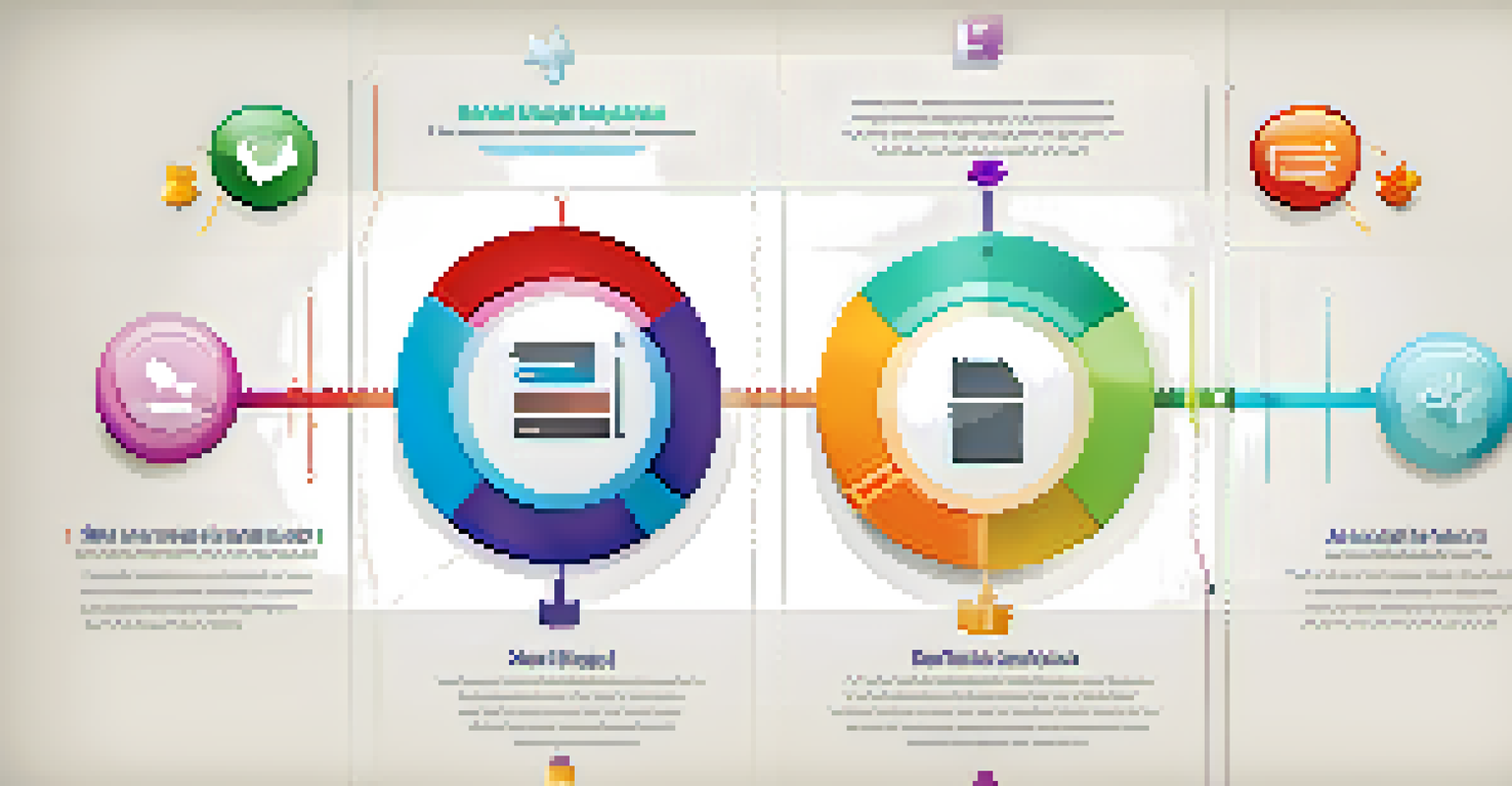Developing a Referral Program to Leverage Customer Networks

Understanding the Importance of Referral Programs
Referral programs are crucial for businesses looking to harness the power of word-of-mouth marketing. When customers recommend a product or service, it carries far more weight than traditional advertising. This is because people trust their friends and family more than they trust brands, making referrals a powerful tool.
People do not buy goods and services. They buy relations, stories, and magic.
By developing a structured referral program, you can incentivize your existing customers to share their positive experiences. This not only helps in acquiring new customers but also strengthens the bond with your current ones. Think of it as a win-win situation where everyone benefits from the exchange.
Moreover, referral programs often come with lower acquisition costs compared to other marketing strategies. With a well-designed program, you can see an impressive return on investment, making it an attractive option for businesses of all sizes.
Identifying Your Target Audience for Referrals
Before launching a referral program, it's essential to identify your target audience. Understanding who your ideal customers are will help you tailor your program to attract similar individuals. This means looking closely at your current customer base and determining what characteristics make them valuable.

For instance, if your business sells eco-friendly products, your target audience may include environmentally conscious consumers. By focusing your referral efforts on this group, you can create a program that resonates with both referrers and referees alike.
Leverage Word-of-Mouth Marketing
Referral programs harness the power of personal recommendations, which are often more trusted than traditional advertisements.
Additionally, consider segmenting your audience based on their purchasing behaviors or preferences. This way, you can develop personalized referral incentives that appeal to different segments, increasing the chances of successful referrals.
Designing Attractive Incentives for Referrals
Incentives are the backbone of any effective referral program. To encourage your customers to refer friends, you need to offer rewards that resonate with them. These can range from discounts and free products to exclusive access to new offerings.
The best marketing doesn't feel like marketing.
For example, a software company might offer a free month of service for each successful referral, while a retail store could provide a percentage off the next purchase. The key is to ensure that the incentives are enticing enough to motivate your customers while still being sustainable for your business.
Remember to clearly communicate these incentives in your marketing materials. When customers understand what they stand to gain, they're more likely to participate in your referral program.
Creating a Seamless Referral Process
A seamless referral process is essential for maximizing participation in your program. If customers find it difficult to refer their friends, they're less likely to do so. Start by simplifying the referral process, making it as straightforward as possible.
Consider leveraging technology to streamline the process. This could involve creating a dedicated landing page where customers can easily submit referrals or providing shareable links that can be sent via email or social media. The easier you make it, the more referrals you'll likely receive.
Target Audience Is Key
Identifying and understanding your ideal customers helps tailor your referral program to attract similar individuals.
Additionally, consider integrating your referral program with existing customer touchpoints, such as during the checkout process or after a purchase. This will help remind customers to refer their friends when they're already engaged with your brand.
Promoting Your Referral Program Effectively
Once your referral program is set up, it's time to promote it effectively. Use various marketing channels to spread the word, including social media, email newsletters, and your website. The more visibility your program has, the more participation you can expect.
You can also consider creating engaging content that explains how your referral program works. This could be in the form of blog posts, infographics, or videos that highlight the benefits of participating. Engaging content can capture the interest of your audience and encourage them to get involved.
Don't forget to encourage your current customers to share their referral experiences. User-generated content can be a powerful promotional tool, as it provides social proof and showcases the satisfaction of your existing customers.
Tracking and Measuring Referral Program Success
To understand the effectiveness of your referral program, you need to track and measure its success. This involves keeping an eye on key performance indicators (KPIs) such as the number of referrals made, conversion rates, and the overall revenue generated from referrals. Regularly reviewing these metrics will help you identify what’s working and what needs improvement.
Utilizing customer relationship management (CRM) software can simplify this process. Many CRM systems offer built-in tracking features that allow you to monitor referral activities easily. By analyzing this data, you can make informed decisions on how to optimize your program.
Continuous Improvement Matters
Regularly enhancing your referral program based on customer feedback ensures it remains relevant and effective.
Additionally, consider gathering feedback from participants about their experience with the referral program. This qualitative data can provide valuable insights into how you can enhance the program and make it even more attractive to your customers.
Continuously Improving Your Referral Program
A referral program is not a set-it-and-forget-it initiative. To keep it relevant and effective, you should continuously seek ways to improve it. This could involve tweaking incentives, enhancing the referral process, or even refreshing promotional materials.
Stay attuned to changes in your audience's preferences and behaviors. Regularly conducting surveys or engaging with customers on social media can help you gather insights into what they value most in a referral program.

Ultimately, the goal is to create a referral program that evolves with your business and customer needs. By being responsive and adaptable, you can ensure that your program remains a valuable asset in your marketing strategy.